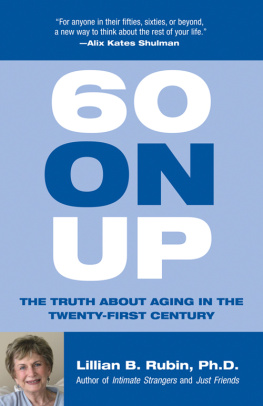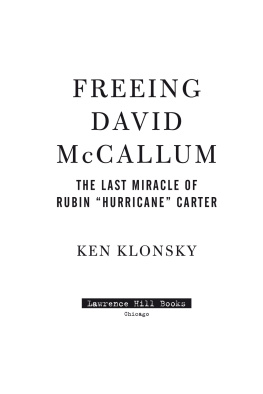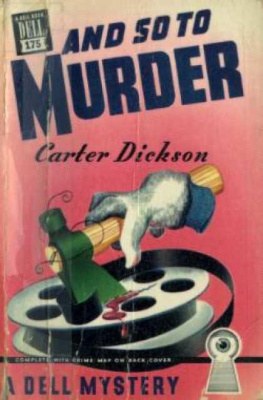
MEDIA MEDDLERS
THE REAL TRUTH ABOUT THE MURDER CASE
AGAINST RUBIN HURRICANE CARTER
LEAD DETECTIVE VINCENT J. DE SIMONE JR.
WITH JAMES V. DE SIMONE

Published by
Hybrid Global Publishing
301 E 57th Street, 4th fl
New York, NY 10022
Copyright 2019 by James De Simone
All rights reserved. No part of this book may be reproduced or transmitted in any form or by in any means, electronic or mechanical, including photocopying, recording, or by any information storage and retrieval system, without the written permission of the Publisher, except where permitted by law.
Manufactured in the United States of America, or in the United Kingdom when distributed elsewhere.
De Simone, James
Media Meddlers: The Real Truth About the Murder Case Against Rubin Hurricane Carter
LCCN: 2019930392
ISBN: 978-1-948181-44-0
eBook: 978-1-948181-45-7
Cover design by: Joe Potter
Interior design: Claudia Volkman
www.mediameddlers.com
www.graphicwitness.com/carter
SYNOPSIS OF THE MEDIA MEDDLERS
Media Meddlers is a provocative book that not only addresses one of the nations most controversial murder cases, but also indicts a sacred institutionthe mediafor the way some of its members used the power of the First Amendment to turn justice into injustice. Seldom has there been written a book that so clearly exposes the abuse of freedom of speech.
Early on the morning of June 17, 1966, Rubin Hurricane Carter, then at the height of his career as a professional middleweight boxer, and his friend, young John Artis, walked into the Lafayette Grill in Paterson, New Jersey, and blasted away with a shotgun and .32 caliber pistol, killing two men and a woman. Another man, shot through the head, miraculously survived.
The state contended that after a night of heavy drinking, Rubin Carter and John Artis committed these crimes as racial revenge for another tavern killing earlier that night of a black man by a white assailant.
This story is told by Passaic County Detective Chief Vincent J. De Simone, Jr., the man who lived with the case for more than ten years.
This is more than the story of a murder case, however; this is a story of how public relations people, movie stars, heavyweight champion Muhammad Ali, and the media tried to sway public opinion in behalf of two convicted killers. So convincing was this campaign that a governor almost pardoned Rubin Carter and John Artis without a further trial. Newspapers also were clamoring for immediate pardon of the defendants.
It is the contention of this book that the newspapersespecially the New York Times and the Newark Star-Ledgerand Channel 5 News were less than objective in covering the case and bringing about a reversal of the first conviction. It is the authors contention that the evidence in this case must be studied in its totality, and he points out many areas of incriminating evidence that the media omitted in their coverage.
Media Meddlers parallels another celebrated New Jersey murder casethat of Dr. X (Mario Jascalevich). In the Dr. X case, a New York Times reporter, Myron Farber, was responsible for bringing about the indictment of the doctor for murder. The doctor was acquitted.
In the Hurricane Carter case, a New York Times reporter, Selwyn Raab, was responsible for bringing about the murder retrial of Hurricane Carter. Carter was convicted again.
Famed criminal lawyer Raymond Brown represented both Dr. X and Hurricane Carter in the boxers first trial.
Detective De Simone was made to be the fall guy by the media. He was unable to respond publicly to the charges because the law forbids detectives to speak about a case while it is still in litigation. This book is his opportunity to speak out, his first opportunity to tell it like it was.
Rubin Carter and John Artis were convicted and given life sentences. The New Jersey Supreme Court reversed the conviction after the media campaign, and many people began calling for immediate dismissal of the charge.
Against insurmountable odds, however, the prosecution moved the retrial. When the jury began deliberations, reporters were making bets on not what the verdict would be, but on how long it would take the jury to acquit the defendants.
Everyone except Vincent De Simone and Burrell Ives Humphreys, the prosecutor who moved the case despite public pressure, was surprised when the jury again brought in a guilty verdict ten years after the crime.
This book also serves as a warning to legislators, movie stars, athletes, and others to carefully consider all of the facts before they take up a cause. It is a book in the aftermath of Watergate that cries out for prudence and responsibility in investigative reporting before severe damage is done.
It tells the story of the night of the murders, the investigation, the first trial, the media campaign, and second trial which not only convicted the killers but vindicated Vincent J. De Simone Jr.
This fascinating case is so involved that it cannot be told sufficiently in a one column newspaper article or a thirty-second television spot. The only place it can be told completely is in a book.
DEDICATION
This book is dedicated to the families of murder victims James Oliver, Fred Nauyaks, and Hazel Tanis, and to the family of Willie Marins, who miraculously survived the assassins bullets and died years later of other causes.
CONTENTS
INTRODUCTION
My father, Vincent J. De Simone, was a caring and loving provider to his family, albeit a strict disciplinarian. As the only son (among four sisters) of a law enforcement officer, there was enough pressure on me growing up, but it was even more challenging during the time of the Rubin Hurricane Carter case. My fathers only concern, no matter how troubling work became, was for my family to live by the Good Book and to conduct our lives with honesty and integrity. This was reinforced by a gift I received from my dad at the age of fifteen: a mounted plaque with a poem entitled the The Man in the Glass. The essence of the poem is to be true to yourself, that honesty is your strongest asset. It reads as follows:
The Man in the Glass
When you get what you want in your struggle for self
And the world makes you king for a day,
Just go to a mirror and look at yourself,
And see what that man has to say.
For it isnt your father or mother or wife,
Whose judgement upon you must pass,
The fellow whose verdict counts most in life
Is the one staring back in the glass.
Hes the fellow to please, never mind all the rest,
For hes with you clear up to the end,
And youve passed the most dangerous, difficult test
If the man in the glass is your friend.
You may be like little Jack Horner and chisel a plum,
And think youre a wonderful guy,
But the man in the glass says youre a bum
If you cant look him straight in the eye.
You may fool the whole world down the pathway of years,
And get pats on the back as you pass,
But your final reward will be heartaches and tears
If youve cheated the man in the glass.
DALE WIMBROW
Throughout my life, when we spoke man to man, my father insisted upon one thing that showed true honesty: looking him directly in the eyes. Having interrogated prisoners his entire career, he would always tell me that if the defendant didnt look straight into his eyes, he was usually lying. As I grew up, I often thought to myself that my father was the kind of man that I wanted to emulate, and if I grew up following his advice and living according to his standards of honesty and integrity, I was bound to succeed both personally and professionally.
Next page










